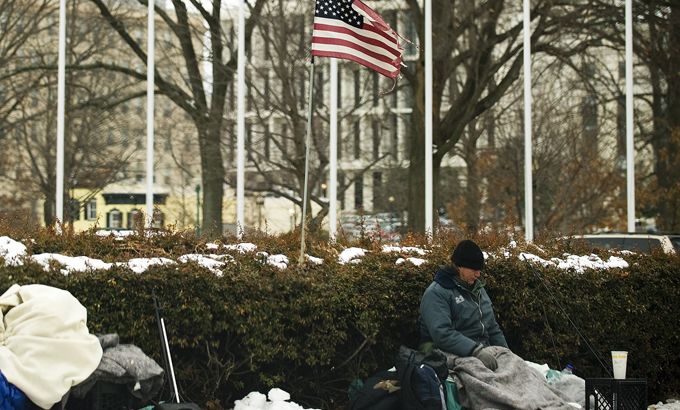
The consequences of the US sequester
We look at how Congress actions to rectify the fiscal situation are creating a larger social affliction.
With $85.4bn in budget cuts, the Unites States’ sequester is beginning to hurt those the US Congress does not want to save. But following a series of studies undermining debt-cutting policies, is the idea of austerity running out of currency?
I think it is really short-sighted to make these kinds of cuts that are going to have an immediate impact across the board without taking into consideration the real danger that people are facing on a day to day basis. It is basically eroding the safety net for the people who need it the most.
It was a financial device that was intended to break the impasse in Congress – a series of draconian and automatic budget cuts that would supposedly push Democrats and Republicans towards making a deal on the budget.
But it failed miserably, and now, two months on from its activation, the so-called sequester is beginning to hit hard on a whole range of programmes reliant on government money.
Congress has felt moved to act in some instances – and act with uncharacteristic speed – like when the cuts caused large delays at airports due to the enforced leave of air traffic controllers.
While Congress successfully staved off flight delays by allowing the Federal Aviation Administration to shift its sequester cuts around, many other programmes have not been so lucky.
Lawmakers have shown no willingness to offer relief to others being hammered by the sequester, including cancer patients, the long-term unemployed and those receiving meals on wheels.
Cuts to long-term unemployment benefits mean that the 4.7 million Americans who have been unemployed for more than six months will lose up to 10 percent or $450 in assistance over the next year.
A five percent cut to public pre-school programmes, known as Head Start, means that 70,000 children from low income families will no longer be able to attend them. A two percent cut to Medicare means doctors and clinics are forced to deny chemotherapy treatments to patients; one New York clinic has had to turn away more than 5,000 Medicare patients so far.
Local Meals on Wheels programmes that provide food to low-income seniors have been slashed. The organisation estimates it will be able to serve 19 million fewer meals this year. Disaster relief will be hit hard as well. The Federal Emergency Management Administration’s budget will lose $1bn as the spring storm season approaches.
In the midst of the global financial crisis, belt-tightening austerity measures were touted as the only solution for the hardest-hit countries.
I think that the whole drama around the sequestration is really a statement about the dysfunction in Washington. Nobody thought it was an actual way to legislate budget cuts.
But new research has discredited that thinking and others suggest the cuts have actually slowed recovery in Europe and the US.
Economists Carmen Reinhart and Kenneth Rogoff, in their book This Time is Different, that has become the austerity bible, argue that the ratio of public debt to GDP must be kept below 90 percent to boost growth.
But a new study from the University of Massachusetts, Amherst found that Reinhart and Rogoff excluded data and made errors in their spread sheets, incorrectly concluding that cutting public spending helps countries recover.
In Europe, years of austerity measures have failed to solve the crisis. Last month Jose Manuel Barroso, the head of the European Commission, warned that alone, such policies were not sustainable.
In Spain and Greece, unemployment has soared to 25 percent, with 12 percent of people out of work in the eurozone as a whole.
A study by the Brookings Institution in Washington DC also suggests that austerity in the US has cost 2.2 million people their jobs.
To discuss the economic consequences of this, Inside Story Americas, with presenter Kimberly Halkett, is joined by guests: James Galbraith, an economist and professor at the University of Texas; David Sirota, a political commentator and New York Times best-selling author; and John Berlau, a senior fellow with the Competitive Enterprise Institute, a libertarian think tank in Washington DC.
|
“I think, actually, that we are seeing developing a very clear strategy which is to impose across the board cuts and then to relax them when there are specific interests which are affected – which happen to be powerful enough to be heard – and that was certainly true in the air traffic situation, but it is obviously not true for victims of domestic violence.” James Galbraith, economist |